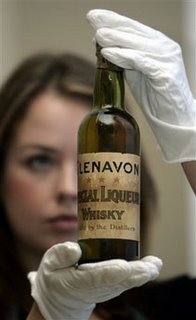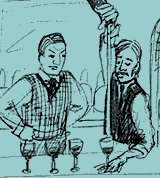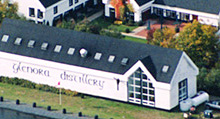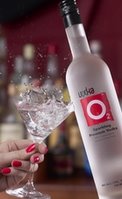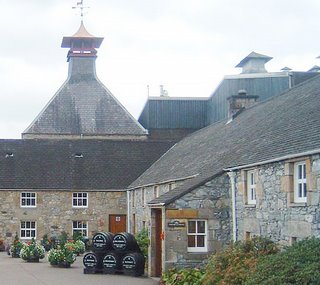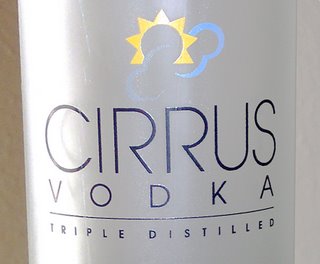 Photo by William M. Dowd
Photo by William M. Dowd
RICHMOND, VA -- Paul McCann obviously doesn’t mind doing things the hard way. He’s staking his financial future on the success of a new product he recently introduced into one of the most competitive sectors of the commercial spirits industry –- vodka.
Vodka is the fastest-growing niche, with new brands popping up virtually weekly. Given that it can be made from nearly any kind of organic matter, as the plethora of concoctions being made from grasses, grapes, beets and soy in addition to the usual grains and potatoes shows, there is little likelihood the competition will ease off.
The major assembly line products – the Smirnoffs, Grey Gooses, Chopins, Absoluts and the like – still have a strong hold on consumers while such quality boutique brands as Peconika from Long Island, N.Y., and Cold River from Maine still are trying to gain a foothold outside their immediate neighborhoods.
So, why is McCann stirring up so much interest?
McCann, essentially a one-man-band known as Parched Group LLC, has been putting his money where he hopes consumers’ mouths are, a half-million dollar investment over the past 2-plus years to develop Cirrus Vodka.
The boutique distiller, who holds a bachelor’s degree in biology from Virginia Commonwealth University and a master’s in environmental health from Old Dominion University, experimented for 18 months to come up with his present formula, which went on Virginia store shelves during the summer.
It is literally cooked up in a Richmond facility from 400 pounds a day of locally-grown potatoes and is selling for about $22 for a 750ml bottle, which puts it in the crowded mid-premium category, although McCann refers to his product as “super premium.”
One edge McCann has over other newcomers to the field is that his vodka already has won a prestigious honor, a gold medal last spring in the renowned San Francisco World Spirits Competition. That came less than a year after Cirrus, with a formula then still being tweaked, scored 88 of a possible 100 points, meaning “highly recommended” in testing by the impartial Beverage Tasting Institute of Chicago.
Besides being a fan of vodka as a consumer, McCann got into the production end of things when he thought he spotted a niche within a niche.
“Two years ago, there were very few of what you would call 'American premium brands',” he said. "All you would see would be all imports.”
Now, there is one more American premium, although making it a lasting success still is an uphill climb for the Virginia entrepreneur.
"I work a lot of hours with little reward at this point, but my greatest reward is the response I have received from people,” McCann said.
His early successes have quickly put a spotlight on Cirrus that other boutique producers might envy. In addition to what’s inside, McCann was smart enough to realize having a distinctive bottle also was necessary to get scarce shelf space in stores.
Cirrus uses elegantly understated black lettering on a frosted glass bottle along with a sky-blue neck label and cap, and small blue clouds interlaced with a simplistic yellow sun, all explained on the reverse side of the bottle: “As with cirrus clouds that herald sunshine and perfect weather, Cirrus quality offers the promise of a good day.”
How is the product being received outside its home state?
“We are in talks with different distributors and are looking at expanding to North Carolina after the first of the year and to Texas, Maryland, Washington, D.C., Pennsylvania and Tennessee in the next six months,” McCann told me. “We have had additional interest from South Carolina, Georgia, Florida, Kansas and Colorado. We will certainly expand to other states as the opportunity arises and we feel we have a distributor that is a good fit for us.”
Finding a good boutique spirit is one thing. Finding a reliable supply of it is another. At the moment, Cirrus is a limited production item, “a maximum of 150 cases a month,” McCann said.
However, “We are expanding the process to produce as much as 300-plus cases per day in the next six to nine months. The equipment and distillery design and relocation here in Richmond is in the works.”
Tasting Notes: A recent sampling of McCann’s triple-distilled product shows he’s got the basic product down right. Cirrus is flat-out good stuff.
My panel of four tried Cirrus three ways -- straight from the freezer; in what passes for a “standard” martini these days now that the original gin component has been supplanted by vodka, and in a Cosmopolitan to see how the vodka would stand up to various cocktail flavorings.
Although the technical definition of vodka is a neutral grain spirit that is colorless, odorless and tasteless, any vodka aficionado knows that is not the case. The water, in particular, can impart as many taste aspects as the grain, potato or other matter used, and the filtration methods have much to do with the smoothness of the distillation.
Cirrus, syrupy cold from the freezer, exhibits a certain creaminess along with a hint of vanilla and a vague sweetness present in most multiply-filtered potato-based vodkas. For those who enjoy vodka cold and straight along with salty tidbits or strong cheeses, this is a drink that will hold its own.
In a martini, it worked well with my house brand vermouth, Noilly Pratt original French dry. I like the oak notes derived from the vermouth’s aging in wood, something that brings out the best in gins or vodkas. It certainly complemented the Cirrus, expanding the middle notes and finish while letting that signature creaminess come through.
However, we found the Cirrus wasted in the Cosmopolitan, with too many warring ingredients that tended to overshadow the nuances of the vodka. Better to use a lesser distillation for a drink that doesn’t require the finest vodka to be successful.
Back to Dowd On Drinks home page.
To Dowd's Spirits Notebook latest entry.
To Dowd's Wine Notebook latest entry.
To Dowd's Brews Notebook latest entry.
